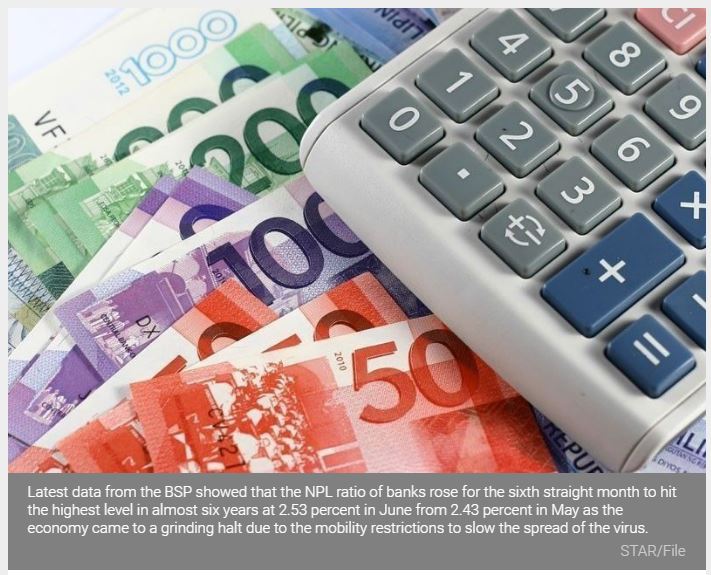Philippines: Bad loans ratio to double
MANILA, Philippines — The non-performing loan ratio (NPL) of local banks may double to 4.6 percent by end-December from 2.4 percent in March as businesses and consumers grapple with the impact of the pandemic, according to a survey conducted by the Bangko Sentral ng Pilipinas (BSP).
In a virtual conference organized by Japan-based Nomura, BSP Governor Benjamin Diokno said the global health crisis has led to concerns that banks may suffer a sharp rise in bad loans. “But based on our assessment, this will not be the case. We expect any increase in NPLs to be modest,” Diokno said.
He said a survey conducted in April among 20 universal and commercial banks, top 20 thrift banks, as well as top 20 rural and commercial banks showed that the NPL ratio of banks may rise to a manageable rate of 4.6 percent in December from 2.4 percent in March.
Latest data from the BSP showed that the NPL ratio of banks rose for the sixth straight month to hit the highest level in almost six years at 2.53 percent in June from 2.43 percent in May as the economy came to a grinding halt due to the mobility restrictions to slow the spread of the virus.
This was the highest gross NPL ratio since the 2.56 percent booked in October 2014. The gross non-performing loans of banks jumped by 26.7 percent to P273.6 billion in June from P215.91 billion in the same month last year.
NPLs or bad debts refer to past due loan accounts where the principal or interest is unpaid for 30 days or more after due date.
The surge in non-performing loans was faster than the 5.2 percent rise in the loan book of local banks to P10.82 trillion as of end-June from P10.29 trillion in the same period last year.
Past due loans referring to all types of loans left unsettled beyond payment date increased at a slower rate of 26.4 percent to P375.27 billion in June from P296.89 billion a year ago for a past due ratio of 3.47 percent, while restructured loans grew by 25.7 percent to P48.47 billion from P38.55 billion for a restructured loan ratio of 0.45 percent.
The sharp rise in soured loans prompted the banking industry to augment the allowance of credit losses by 49.1 percent to P300.35 billion in June from P201.42 billion in the same month last year, translating to a higher NPL coverage ratio of 109.77 percent from 93.29 percent.
Diokno said the BSP has implemented a long list of regulatory relief measures to ensure stability of the financial system as the potential losses that the institutions would have to endure due to the crisis.
These include allowing banks to draw down from their regulatory buffers, relaxing the terms for their financing facilities, reducing penalties for reserve deficiencies, counting of loans to micro, small and medium enterprises as part of compliance to the reserve requirements, reducing the credit risk weights of MSME loans, assigning zero risk weights to loans guaranteed by select government institutions, allowing reclassification of debt securities to reduce the impact of mark-to-market losses, and allowing temporary exclusion of debt securities acquired from market making activities from the single borrower’s limit.
“We have implemented numerous relief measures. And more are being considered,” the BSP chief said.
Diokno said the BSP is looking at regulatory enhancements that would enable regulated entities to focus their resources on addressing the impact of the COVID-19 pandemic on their operations and the financial consumers.
As a result of the relief measures, he said the average daily loans to MSMEs soared by 750 percent to P84.2 billion in July from only P9.9 billion in April.
Source: https://www.philstar.com/business/2020/08/26/2037796/bad-loans-ratio-double


 Thailand
Thailand




